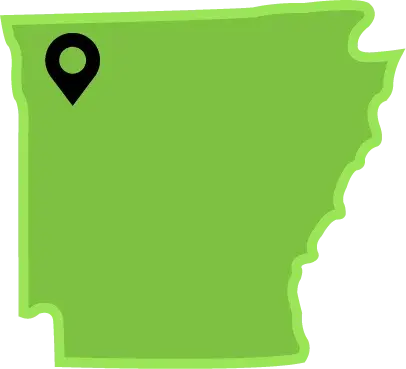Employee benefits are among the most significant tools for attracting and retaining top talent—but they’re only effective if employees understand them. For HR leaders, effectively communicating these benefits is no small task, especially with today’s diverse workforce that spans generations, working styles, and geographies. Technology is changing the game for HR professionals by offering tools to simplify and enhance how benefits are communicated. This guide explores the importance of benefits communication, the challenges HR teams face, and how technology can create meaningful connections between employees and the perks their employers provide.
Why Benefits Communication Matters More Than Ever
Benefits packages have grown in complexity, often including health insurance, retirement plans, wellness programs, remote work stipends, and more. While these options broaden the appeal to employees, they can also lead to confusion if not communicated clearly.
When employees don’t understand or engage with their benefits, it creates several issues:
- Underused Benefits: Employees may leave valuable perks untapped simply because they don’t know how to access them.
- Financial Waste: Poor communication means benefits do not deliver a return on the employer's investment.
- Lower Satisfaction and Retention: Confusion around benefits contributes to employee dissatisfaction, which can lead to higher turnover.
An effective benefits communication strategy ensures employees make full use of what’s offered to them, improving engagement, loyalty, and your bottom line.
What Benefits Do Employees Want?
While the average organization offers more than 20 distinct benefits, 67% of employees say they do not think employers understand which benefits are actually relevant.
The most important categories to employees are base-pay competitiveness, time off, and promotion/recognition. Within these top three categories, five attributes have the highest sensitivity scores and are most aligned to employee needs:
- Growth in base pay over three years
- Paid vacation days
- Paid sick days
- Average time to promotion
- Base pay increase for promotion
The take-away for HR? To maximize the relevance of total rewards — and by doing so drive talent and business outcomes — focus disproportionately on these five attributes.
Common Challenges HR Teams Face
Communicating benefits isn’t straightforward, mainly due to these key obstacles HR teams often encounter.
Multigenerational Workforce
Baby Boomers, Millennials, and Gen Z employees have varying preferences for how they consume information. While some may prefer in-depth printed guides, others may lean toward apps or short videos. Bridging these generational preferences requires adaptability.
Remote and Hybrid Work Environments
The rise of remote and hybrid work has made it harder to communicate effectively. Without in-office meetings or bulletin boards, HR leaders must find digital solutions to ensure remote employees stay informed and connected.
Information Overload
Employees are bombarded with information daily, from emails to Slack notifications. Ensuring benefits-related messaging cuts through the noise and captures attention is essential.
Tech Tools That Enhance Benefits Communication
Innovations in HR technology offer practical ways to overcome communication challenges. Here are some tools that can make your benefits communication strategy seamless and effective.
1. Self-Service HR Platforms
Modern HR software platforms empower employees to access all their benefits information in one place. Through self-service portals, employees can review their options, make selections, and find forms without waiting for HR's support.
2. Mobile Apps for On-the-Go Access
Many companies are turning to mobile apps that allow employees to access benefits details anytime, anywhere. Apps from platforms like isolved break down each benefit component and offer a seamless way to enroll or make changes.
3. AI-Powered Chatbots
AI chatbots are transforming the way businesses handle communication. They can answer common questions, give step-by-step guidance, and direct users to useful resources. These tools provide quick and efficient support in real time.
4. Interactive Videos and Webinars
Video communication tools are a great way to share information clearly and visually. They allow teams to explain important topics in an engaging format that’s easy to understand. Employees can revisit these resources anytime, ensuring they have access to key details when they need them.
5. Automated Email and SMS Campaigns
HR teams can use communication tools to send targeted messages to employees. These tools help organizations share relevant information with specific groups, ensuring messages are personalized and effective. For example, tailored emails can highlight benefits or provide guidance on workplace policies.
With TPC, all of the above (and more) is offered through our technology partner, isolved, which is an intelligently connected solution that updates payroll automatically on the correct effective date with the appropriate deductions based on employee-elected choices.
Personalization and Engagement Through Data
Personalization is the key to making benefits communication not only effective but meaningful. By using employee data, HR leaders can deliver highly relevant, engaging messages.
Analytics for Tracking Effectiveness
Analytics tools within HR platforms offer insights into which benefits employees are using and where communication gaps exist. For example, if engagement with your retirement plan is low, it may highlight a need for clearer messaging.
Segmented Communications
Segment your benefits communication by role, department, age group, or location to deliver content tailored to different employee needs. A Gen Z employee likely values remote work stipends more than a Baby Boomer focused on retirement planning.
Real-Time Feedback
Surveys and feedback tools can gauge how well employees understand their benefits and identify areas for improvement. This two-way communication ensures HR strategies are continuously optimized.
Integrating Benefits Communication with Payroll Systems
Combining payroll and benefits communication into a single system—like through integrated payroll and benefits platforms—can bring several advantages.
Personalized Messaging
Payroll data gives insights into factors like eligibility, income brackets, and life events such as new dependents or promotions. This allows personalized benefits updates triggered by these changes.
Fewer Errors, More Efficiency
An integrated system eliminates the need for manual syncing between HR and payroll, reducing errors in benefits enrollment or deductions.
Compliance and Documentation
By merging documentation into an all-in-one system, HR leaders ensure that compliance with labor laws and HIPAA is easier to track and maintain.
Best Practices for HR Leaders
Enhancing benefits education for employees with technology isn’t just about having the right tools—it’s about using them effectively.
- Update Content Regularly: Benefits, regulations, and employee needs evolve frequently. Regular updates keep your communication relevant.
- Provide Key Life Event Communication: Guide employees through major life events like marriage, childbirth, or retirement to show them exactly how their benefits apply.
- Make It Visual and Accessible: Use infographic-style presentations and mobile-friendly designs to make information easier to digest.
Empower Your Workforce with Better Communication
Effective benefits communication enhances trust, boosts engagement, and makes every dollar spent on perks more valuable. By adopting HR technology, leaders can simplify once-complex processes and offer employees a clearer understanding of their benefits.
If you're eager to simplify and enhance your communication strategies with innovative tools, now’s the time to act. Contact The Payroll Company today to learn how our platform partner is able to provide benefits communication within one full-service payroll platform and help you retain top talent through meaningful connections.





